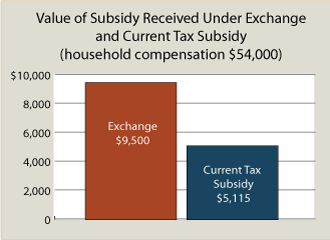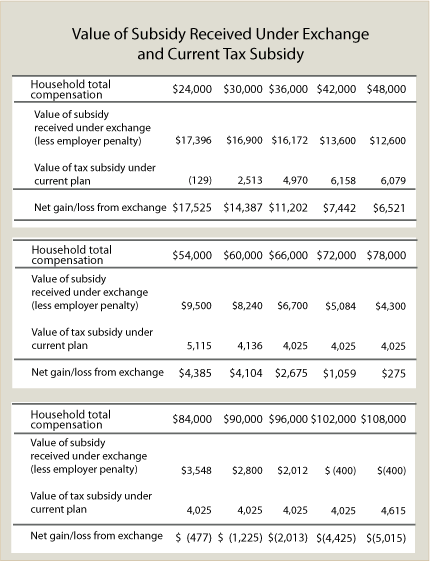The voices of Tax Policy Center's researchers and staff

 To try to save money on health reform, reformers have proposed to create a two-tiered system of subsidies. Those who remain with employer-provided health insurance would largely be left in the existing system, while others would have access to a new subsidy.
To try to save money on health reform, reformers have proposed to create a two-tiered system of subsidies. Those who remain with employer-provided health insurance would largely be left in the existing system, while others would have access to a new subsidy.
The graph and table below show the size of this difference for the bill recently proposed by the Senate Finance Committee. For more details, see http://www.taxpolicycenter.org/numbers/displayatab.cfm?template=simulation&SimID=343. The recently passed House bill starts with a similar two-tiered structure, but then tries to address some of the difference with a higher charge on employers who don’t provide health insurance.
For households at most income levels, the new subsidy is more valuable than the old one. This creates problems of fairness, and it also can cause large shifts in whether employers provide insurance at all, especially when they can pay their employees more total compensation at no cost to themselves by dropping (or for new firms, never offering) an employer-based health insurance policy. Incentives for outsourcing and for converting full-time to part-time jobs are also increased. For more detail and for a way out of this problem, see http://www.urban.org/url.cfm?ID=901297.

As an interesting twist on who benefits from health reform, unions have generally opposed reforming the existing employer-based subsidy, but, in so doing, they may have set up a situation where they have denied many of their members access to a more generous subsidy. The main exceptions are for higher-paid workers and some moderately higher paid workers with very generous plans. On the other hand, a single, reformed, subsidy might have helped most of their members. Similarly, small businesses have been reluctant to support reform, but many of them would be put at a competitive advantage in hiring employees.
Posts and comments are solely the opinion of the author and not that of the Tax Policy Center, Urban Institute, or Brookings Institution.
